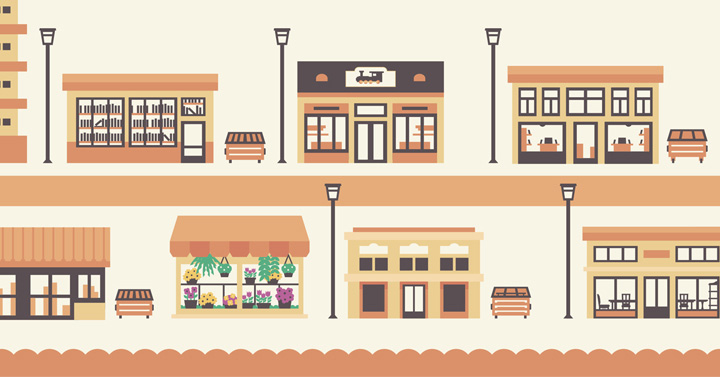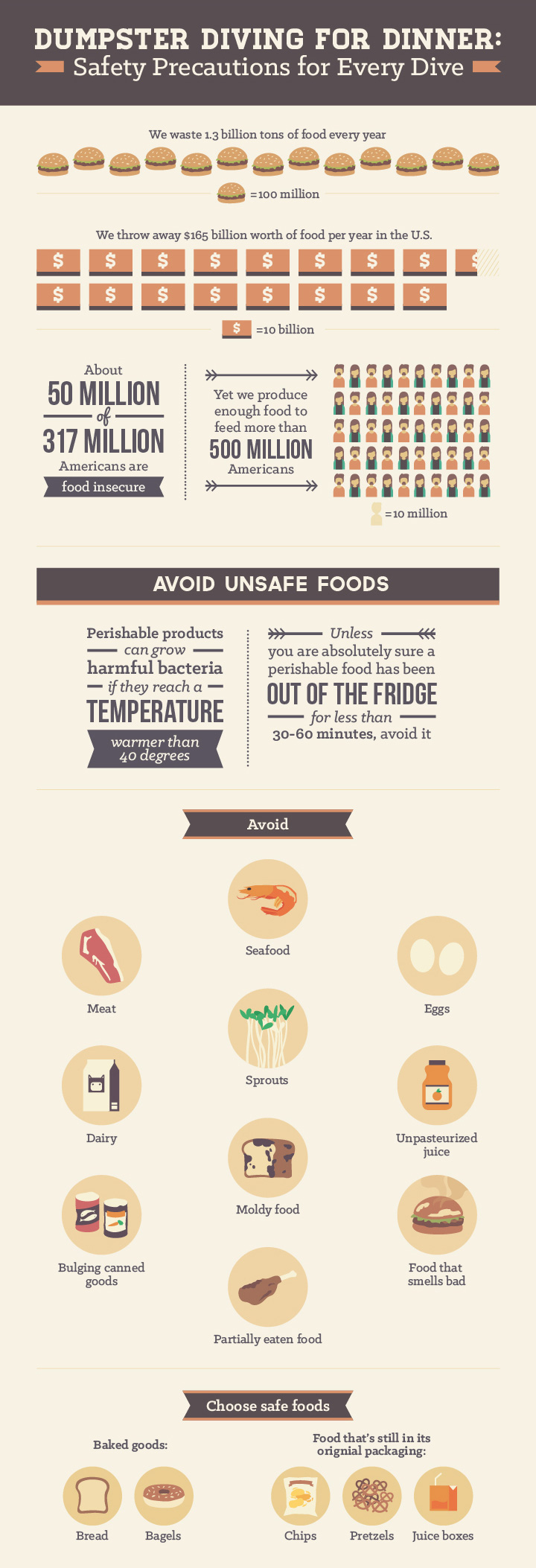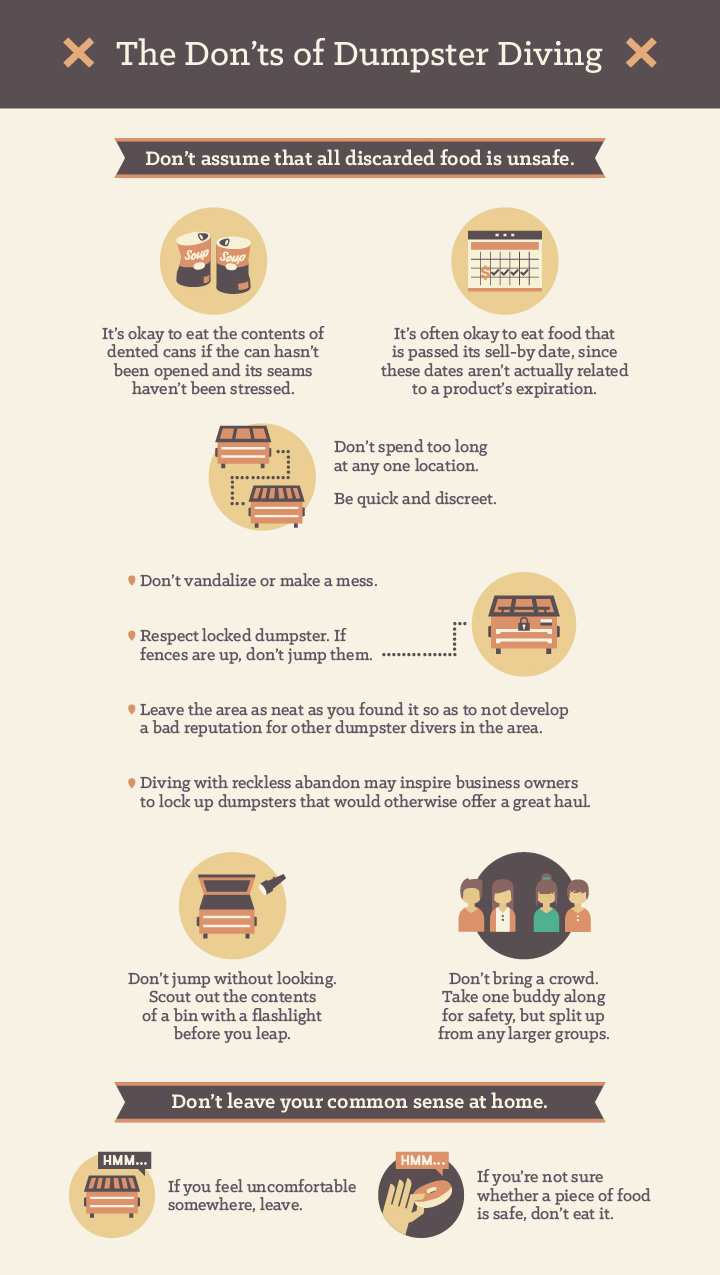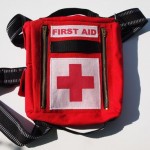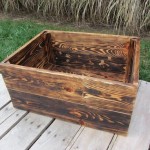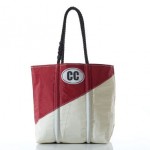The Dos and Don’ts of Successful Dumpster Diving
While some people spend the early morning hours asleep, partying, or getting ready for work, other people around the world pursue a slightly less conventional activity: digging through trash.
Why, you might ask, would someone enthusiastically subject themselves to the often disgusting sights and smells on the inside of a dumpster or in the middle of a trash heap? Turns out, these intrepid dumpster divers are on to something. Read on to learn what dumpster diving is all about and how you can take advantage of the wonderful treasure that is other people’s trash.
What Is Dumpster Diving?
At its simplest, dumpster diving is the act of recovering discarded items that are still useable or hold some kind of value. Also known as urban foraging, track picking, scavenging, salvaging, or curb crawling, dumpster diving targets discarded goods from retailers, schools, homes, businesses, construction sites, or anywhere that useable products are thrown away.
Anyone can dumpster dive, though the practice is often tied to freeganism—a movement where people seek to shrink their ecological footprint, reduce society’s collective waste, and inspire more sustainable models of living. The freegan lifestyle is a response to the tremendous amounts of waste generated by current models of production and consumption.
Take, for example, food waste. One-third of all the food produced for human consumption is lost or wasted—that’s around 1.3 billion tons of wasted food per year, or enough to feed the nearly 1 billion people worldwide who go hungry. Of course, wasted food also equals wasted money and labor, and the useless consumption of land and water resources.
These same principles apply to virtually any wasted product. Waste is a sign that resources are being used inappropriately and that vital needs aren’t being met for large numbers of people. Since a major reason for dumpster diving is to combat these injustices, the movement could arguably be called revolutionary.
Not only that, but it’s a great way to have some fun and save some money. Divers can walk away from a dive with plenty of usable items, from clothing and furniture to computers, appliances, books, DVDs, office supplies, lamps, tools, construction materials, toys, and, yes, food. Furnishing a new apartment for free or nearly free? Yes, please!
There’s an art to dumpster diving that only comes with experience. But with some simple dos and don’ts—and a little bit of practice—you’ll be well on your way to becoming a dumpster diving pro.
The Dos and Don’ts of Dumpster Diving
Do
Scout ahead of time.
Plan your route in advance to avoid wasted time. Rather than aimlessly search for possible scores, scope things out before a dive. Walk, bike, or drive around your target neighborhood and take note of which stores seem to discard usable items, when they take out the trash, and when the stores close. Not sure where to start? Florists, grocery stores, department stores, condos or apartment complexes, bookstores, electronics stores, office complexes, craft stores, hotels, furniture stores, and toy stores are all good options. Stores on less busy roads are often more likely to leave their dumpsters unlocked.
Check the laws.
If you’re not sure whether dumpster diving is legal in your area, check the local ordinances or inquire with your police department. Many areas view trash as public domain, but it’s still important to respect fences, “no trespassing” signs, and local laws.
Pack right.
Bring thick and/or rubber gloves—odds are good you’ll need to dig around a bit, and gloves will help protect you from sharp or yucky objects. Also be sure to bring a flashlight (flashlights with wrist straps are particularly useful, so you don’t have to go digging for a dropped light at the bottom of a dumpster). Some people find a milk crate helpful (to use as a stepping stool) or a poking stick to help sift through cast-offs. A first aid kit and sanitizing wipes are also great items to have on hand.
Wear old clothes.
You’re bound to get a little bit messy, so there’s no sense in dirtying nice clothes. Wear thick-soled, sturdy shoes to help protect your feet if you accidentally step on something sharp. If you’re planning to go somewhere after your drive (other than the shower), be sure to pack a change of clothes.
Go early (or late).
Diving before it’s light out ups your chances of hitting the dumpsters before garbage trucks get to them. Added bonus: You’re less likely to attract curious or cranky onlookers.
Plan for transport.
The size of your haul can be influenced by a number of factors, especially your method of transportation to and from the dumpster. If you’re traveling by foot or bike, bring reusable bags to help cart home your haul. If you anticipate salvaging larger items (such as furniture or computers), then it’s best to travel with a larger vehicle. (A pickup truck or a van with foldable back seats are great options.) If traveling in a car, keep cardboard boxes on hand for easier transport.
Loosen your expectations.
Shopping in a dumpster isn’t the same as running to the store. You can’t control the selection you’ll encounter on any given day, so there’s not much use to approaching a trip with a specific list of items in mind. Instead, let yourself be surprised by whatever finds come your way.
Expect to feel a little weird.
It’s normal to feel self-conscious the first few times you dive. Keeping an open mind, being well prepared, and adopting a spirit of adventure will go a long way toward smoothing the transition to full-blown diverhood.
Bring a buddy.
Since dumpster diving is not without its risks (you may cut yourself on a sharp object, twist an ankle, or be confronted by an angry business owner), it’s helpful to bring along another person who can keep an eye out.
Mind the seasons.
We’re not just talking about the weather (though if you want to circumvent a gross experience, avoid diving after it’s rained). When it comes to peak “diving season,” keep a few things in mind: Many people move out of rental units at the end of the month, so this can be a great time to score furniture or appliances. The same goes for mid-May and mid-December if you live near a college or university. Many stores offload holiday-related merchandise after major holidays, so this can be another great time to dive. “Going out of business” signs can also signal a diving bonanza.
Practice proper food preparation and storage.
Foods that are most likely to be safe include baked goods (such as bread or bagels), food that’s still in its original packaging (chips, pretzels, or juice boxes), canned food, and fresh produce. Perishable foods such as dairy and meat can grow harmful bacteria if they reach a temperature warmer than 40 degrees. Unless you are absolutely sure a given perishable food has been out of the fridge for less than 30 to 60 minutes, it’s best to avoid it. To be on the safe side, avoid meat, seafood, eggs, dairy, sprouts, unpasteurized juice, and anything that is moldy, smells bad, or is partially eaten. And never, ever take home bulging cans. When you get home, thoroughly clean fruit, vegetables, and the outsides of cans or packaging before consuming any salvaged food. Even with the best food hygiene practices, anyone with a weakened immune system should be extremely cautious around salvaged food.
Get crafty.
While it’s quite possible you’ll find completely functional and intact products on a raid, many other items are in the trash for a reason. Be prepared to learn a few handy tricks to fix common household products—or enlist the help of a crafty friend.
Share the wealth.
Scored a great item but not sure what to do with it? Consult Trashwiki for ideas or share the item on Freecycle (think Craiglist, but everything’s free). If you’re not interested in passing on free goods, then be sure to only take what you can use from a given dive site.
Don’ts
Don’t assume that all discarded food is unsafe.
Many stores make a point of bagging discarded items, and they often don’t mix food and non-food products. In reality, there’s not much difference between the unwrapped bread that winds up in a bag in a dumpster and the bread products you see on grocery store shelves. It’s also okay to eat the contents of dented cans, provided the can hasn’t been opened and that its seams haven’t been stressed. As a general rule, it’s okay to eat food that is passed its sell-by date, since these dates aren’t actually related to a product’s expiration.
Don’t forget to properly store and prepare foods once you’ve brought them home.
We’ve already mentioned this, but it’s worth repeating: Good food hygiene and care is essential to keeping yourself healthy. Consult the “food preparation and storage” entry in the “dos” section, above, for more tips.
Don’t spend too long at any one location.
Being quick and discreet (for instance, not parking your car right beside the dumpster) will decrease your chances of getting hassled.
Don’t vandalize or make a mess.
If a dumpster is locked, respect that. If fences are up, don’t jump them. Leave the area as neat as you found it so as not to develop a bad reputation for other dumpster divers in the area. Diving with reckless abandon may inspire business owners to lock up dumpsters that would otherwise offer great hauls.
Don’t jump without looking.
Diving into an open bin without looking inside first risks bodily harm. Stay safe before you leap by scoping out the contents of a bin with a flashlight.
Don’t bring a crowd.
A party of more than two dumpster divers can attract unwanted attention. Take one buddy along for safety, but split up from any larger groups.
Don’t leave your common sense at home.
If you feel uncomfortable somewhere, leave. If you’re not sure whether a piece of food is safe, don’t eat it. Listen to your intuition, and you’ll increase your odds of having a great dive.
The Bottom Line
Dumpster diving can be an economical way to cut down on waste, reduce your eco-footprint, and add a little adventure into your life. By practicing the dos and don’ts above and utilizing common sense, you’ll be well equipped to uncover some trash turned treasure. Happy hunting!
Many thanks to Freegan.info for providing a wealth of resources pertaining to dumpster diving.
If this article has you interested in dumpster diving, check out these custom made tote bags for your dumpster collection. — http://www.custommade.com/gallery/custom-handbags/
